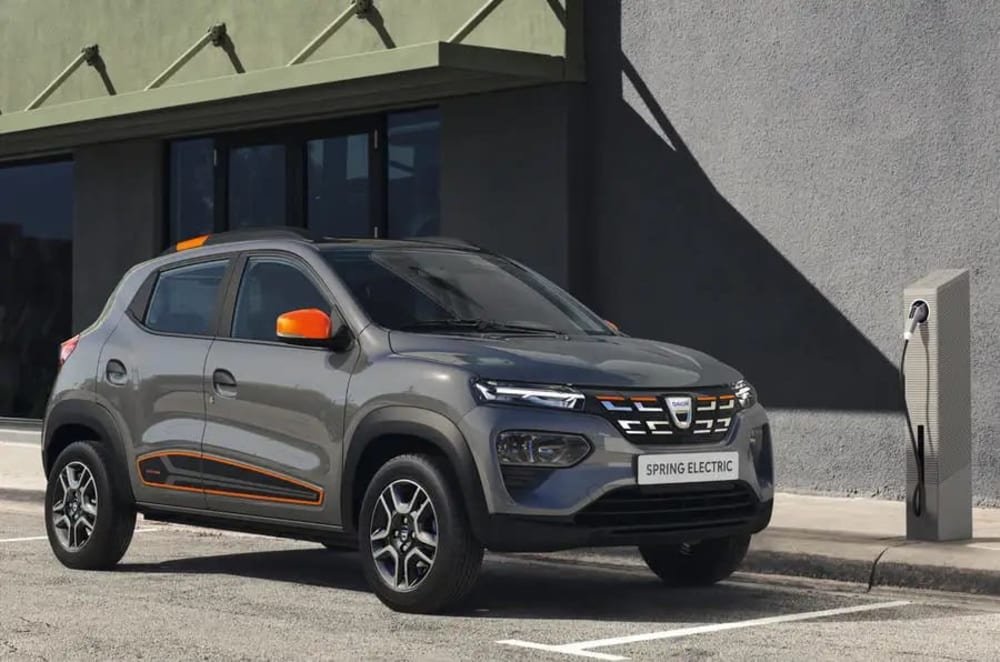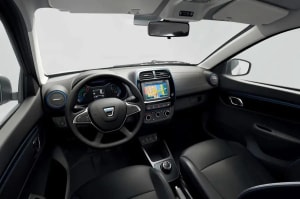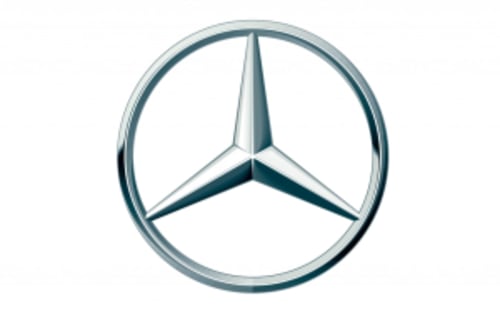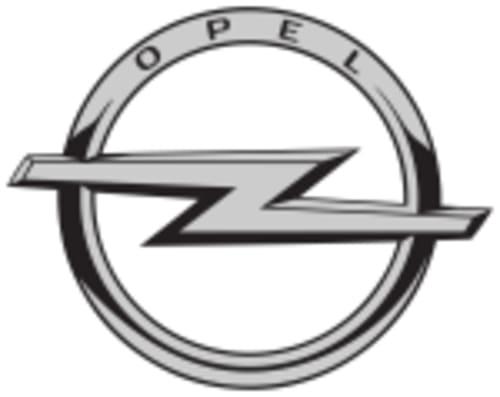Information and electric vehicles of the [object Object] brand

![[object Object] logo](https://res.cloudinary.com/donyiousk/image/upload/w_80/f_auto/c_scale,w_1400/v1/car/utcdbek4wkciq2sdqpak)
Dacia
Electric elegance.



Dacia electric vehicles
What makes Dacia EVs different from other brands?+
Dacia, a Romanian car manufacturer known for its budget-friendly vehicles, has entered the electric vehicle EV market with its Spring model. Here's how Dacia EVs differentiate themselves from other brands:
Affordability: Dacia's primary focus is on offering EVs at the most competitive price point in the market. The Spring is currently one of the cheapest EVs available in Europe, making it accessible to a wider range of consumers compared to pricier options from established automakers.
Simplicity: Dacia EVs prioritize practicality and functionality over excessive features or complex technology. The Spring boasts a minimalist design and avoids unnecessary bells and whistles, keeping production costs and the final price tag lower.
Focus on essentials: Dacia EVs concentrate on providing the core functionalities expected from an EV, such as adequate range for daily commutes, reliable charging options, and sufficient space for passengers and cargo. They might not offer the latest in connectivity features, advanced driver-assistance systems, or luxurious interiors, but they fulfill the basic needs of EV ownership at an attractive price.
Target audience: Dacia EVs cater to a different segment of the EV market compared to many other brands. They target budget-conscious buyers who prioritize affordability and practicality over cutting-edge technology or premium features. This approach makes them appealing to first-time EV buyers or those looking for a no-frills electric vehicle for everyday use.
Renault backing: Although Dacia is a separate brand, it benefits from the technical expertise and resources of its parent company, Renault. This allows Dacia to leverage Renault's experience in EV development and production, ensuring quality and reliability while keeping costs competitive.
Emerging markets: Dacia is currently focusing on expanding its EV presence in emerging markets, where affordability and practicality are key considerations for car buyers. This strategy could give them a significant advantage in regions like Southeast Asia, Eastern Europe, and parts of Africa.
However, it's important to note that Dacia EVs also face some drawbacks:
- Limited range: The Spring, for example, offers a relatively short range compared to many other EVs, which might not be suitable for long journeys.
- Basic features: The focus on affordability means Dacia EVs lack some of the advanced features and creature comforts found in pricier models.
- Brand perception: Dacia's budget-oriented image might deter some buyers who prefer established brands with a more premium reputation.
Overall, Dacia EVs offer a unique proposition in the EV market by prioritizing affordability and practicality. They cater to a specific segment of consumers who value value for money and are less concerned about cutting-edge technology or luxurious interiors. While they might not be for everyone, Dacia's EVs have the potential to disrupt the market and make EV ownership more accessible to a wider range of people.
What are the different models of Dacia EVs available?+
Dacia currently only has one electric vehicle model available, the Spring. It's a small SUV that's known for its affordability, with a starting price of around £18,000 in the UK.
The Spring has a 26.8kWh battery that provides up to 147 miles 237 km of range on the WLTP cycle, and it can be charged from 0 to 80% in around 30 minutes using a DC rapid charger.
How much do Dacia EVs cost?+
Dacia currently only offers one electric vehicle, the Spring. The price of the Dacia Spring Electric varies depending on the country and trim level, but it is generally the most affordable EV on the market.
- In France, the Dacia Spring Electric starts at €17,840 around $19,200.
- In the UK, the price is expected to be under £20,000 around $24,600 when it launches in 2024.
- In Germany, the price starts at €20,490 around $22,000.
The Dacia Spring Electric is a small hatchback with a range of up to 126 miles 203 km) on the WLTP cycle. It is powered by a 23kW electric motor and has a top speed of 56 mph (90 km/h.
What is the range of Dacia EVs?+
Dacia currently only offers one electric vehicle, the Spring Electric. Its range varies depending on driving conditions and weather:
- Official WLTP range: Up to 143 miles 230 km
- City driving in mild weather: Up to 255 km
- Highway driving in mild weather: Up to 145 km
- Combined driving in mild weather: Up to 190 km
- Worst-case scenario cold weather, highway driving: 110 km
These numbers are just estimates, and the actual range you achieve will depend on several factors, including:
- Driving style: Aggressive driving will consume more energy than driving smoothly.
- Weather: Cold weather reduces battery range.
- Terrain: Driving uphill or on rough roads will consume more energy.
- Use of accessories: Air conditioning and heating will reduce range.
If you're considering buying a Dacia Spring Electric, it's important to keep these factors in mind and plan your trips accordingly. You can also use online tools to estimate the real-world range you can expect based on your specific driving conditions.
How long does it take to charge a Dacia EV?+
The charging time for a Dacia EV depends on a few factors, including:
Model: There are two models of Dacia EV: the Spring Electric and the Jogger. The Spring has a smaller battery 25 kWh usable) and slower charging speeds, while the Jogger has a larger battery (52 kWh usable and faster charging capabilities.
Charger type: There are three main types of EV chargers:
- Wall outlet: The slowest option, with times ranging from 5 hours to 13 hours depending on the model and the amperage of the outlet.
- AC Level 2 charger: Faster than a wall outlet, typically taking 4 to 5 hours for the Spring and 2 to 3 hours for the Jogger.
- DC fast charger: The fastest option, adding 80% charge in about 30 minutes for the Spring and 45 minutes for the Jogger.
Starting battery level: Charging from 0% to 100% will take longer than charging from 20% to 80%.
Environmental factors: Cold weather can slow down charging, so expect slightly longer times in winter.
Here are some approximate charging times for the Dacia Spring:
- Wall outlet: 13 hours 45 minutes to full charge
- AC Level 2 charger: 5 hours to full charge
- DC fast charger: 37 minutes to charge from 10% to 80%
Here are some approximate charging times for the Dacia Jogger:
- AC Level 2 charger: 5 hours to full charge 7.4 kW charger
- DC fast charger: 45 minutes to charge from 10% to 80%
For more specific information about your particular Dacia EV, you can consult the owner's manual or look up the specifications online.
What are the maintenance requirements for a Dacia EV?+
Dacia EVs, like most electric vehicles, have generally lower maintenance requirements compared to gasoline cars. However, there are still some important things to keep in mind:
Battery:
- Charging: Regular charging is crucial, but avoid overcharging or rapid charging too often, as this can stress the battery. Follow the manufacturer's recommendations for charging protocols.
- Temperature: Extreme temperatures can affect battery performance and lifespan. Park your car in a cool, shaded area whenever possible.
- Health monitoring: Most Dacia EVs have a battery health monitoring system. Keep an eye on it and get the battery checked if any issues arise.
Electric motor and drivetrain:
- No oil changes: Unlike gasoline cars, electric motors don't require oil changes.
- Cooling system: The electric motor and related components still require a cooling system. Check the coolant level and condition regularly.
- Regenerative braking: This system can wear down brake pads more slowly than in gasoline cars, but they still need to be checked and replaced periodically.
Other maintenance:
- Tires: Maintain proper tire pressure and rotate them regularly for optimal performance and wear.
- Wiper blades and lights: Replace worn-out wiper blades and ensure all lights are functioning properly.
- Cabin air filter: Replace the cabin air filter regularly to maintain good air quality inside the car.
Additional tips:
- Consult your Dacia EV owner's manual for specific maintenance schedules and recommendations.
- Take your car for regular servicing as recommended by the manufacturer, even though it might seem like there's not much to do.
- If you notice any unusual sounds, vibrations, or changes in performance, don't hesitate to get your car checked by a qualified mechanic.
By following these tips, you can help ensure that your Dacia EV runs smoothly and efficiently for many years to come.
Remember, I can't provide specific advice for your individual Dacia EV model. For the most accurate information, consult your owner's manual or reach out to an authorized Dacia dealership in Ho Chi Minh City.
Does Dacia offer any tax credits or incentives for purchasing an EV?+
Dacia, a car manufacturer known for its budget-friendly vehicles, currently does not offer any direct tax credits or incentives specifically for purchasing an electric vehicle EV in Vietnam. However, there are some general incentives for EV ownership in Vietnam that may apply to Dacia EVs:
- Reduced registration fee: Electric vehicles in Vietnam are exempt from the 10% registration fee typically applied to new cars. This can save you a significant amount of money upfront.
- Lower annual registration fee: The annual registration fee for electric vehicles is also lower than that for gasoline-powered cars.
- Limited exemption from circulation tax: Depending on the city or province, electric vehicles may be exempt from circulation tax for a certain period of time. This tax is typically based on engine displacement, so electric vehicles benefit from their lack of emissions.
It's important to note that these incentives might be subject to change or vary depending on specific regulations in different localities within Vietnam. It's always best to check with the local authorities or Dacia dealerships for the latest information on applicable incentives.
While Dacia itself doesn't offer specific EV incentives, their EVs might still be more affordable than other brands due to their generally lower price point. Additionally, the fuel cost savings associated with owning an EV can be significant in the long run, even without direct tax credits.
What is the warranty on a Dacia EV?+
The warranty on a Dacia EV depends on two key factors: the specific model of the EV and whether you're looking at the standard manufacturer warranty or an extended warranty option. Here's a breakdown:
Standard Manufacturer Warranty:
- Duration: All Dacia EVs, including hybrids, come with a standard 3-year/60,000-mile warranty from the date of first registration.
- Coverage: This warranty covers the repair or replacement of any defective parts due to material, assembly, or manufacturing faults. It also covers consequential damage to the vehicle caused by the primary defect.
- Important notes:
- Some parts, like wear and tear items e.g., tires, brake pads, might have reduced coverage in terms of age and mileage.
- The warranty is only valid for repairs carried out by an authorized Dacia dealership.
Extended Warranty:
- Availability: You can purchase an extended warranty through your Dacia dealer while your vehicle is still within the manufacturer's warranty period i.e., within the first 3 years.
- Duration: You can choose different coverage lengths for the extended warranty, typically ranging from 1 to 5 years. The mileage limit, however, starts from the vehicle's first registration and doesn't reset with the extended warranty.
- Coverage: The extended warranty offers similar coverage as the standard warranty, but it extends the protection beyond the initial 3 years.
Additional Points:
- The specific terms and conditions of both the standard and extended warranties may vary slightly depending on your location. It's always best to refer to the official warranty documentation provided by your Dacia dealer for the most accurate information.
- You can find more information about Dacia warranties on the official Dacia website: Link
Where can I learn more about Dacia EVs?+
Dacia currently only offers one electric vehicle, the Spring. Here are some resources where you can learn more about it:
Official Dacia website:
- Global: Link
- Specific country websites: For specific information and pricing relevant to your location, you can visit the Dacia website for your country. For example, if you're in the UK, you can visit Link.
Reviews and comparisons:
- DrivingElectric: Link This website offers a comprehensive review of the Spring, including its pros and cons, performance, range, and price comparison with other EVs.
- EV Database: Link This website provides detailed technical specifications for the Spring, including battery capacity, range, charging times, and performance figures.
- YouTube: There are many video reviews of the Dacia Spring available on YouTube. These can be a good way to get a feel for the car and see it in action.
Other resources:
- Dacia Spring forums: There are online forums where Dacia Spring owners and enthusiasts discuss the car, share tips and advice, and answer questions.
- Car buying guides: Many car buying guides and websites have information on the Dacia Spring, including its price, features, and competitors.
Here are some additional things to keep in mind when researching Dacia EVs:
- The Dacia Spring is currently only available in a limited number of markets.
- The Spring is designed to be an affordable and practical electric car, so it does not have the same level of performance or technology as some other EVs.
- The Spring has a relatively short range compared to some other EVs.





































